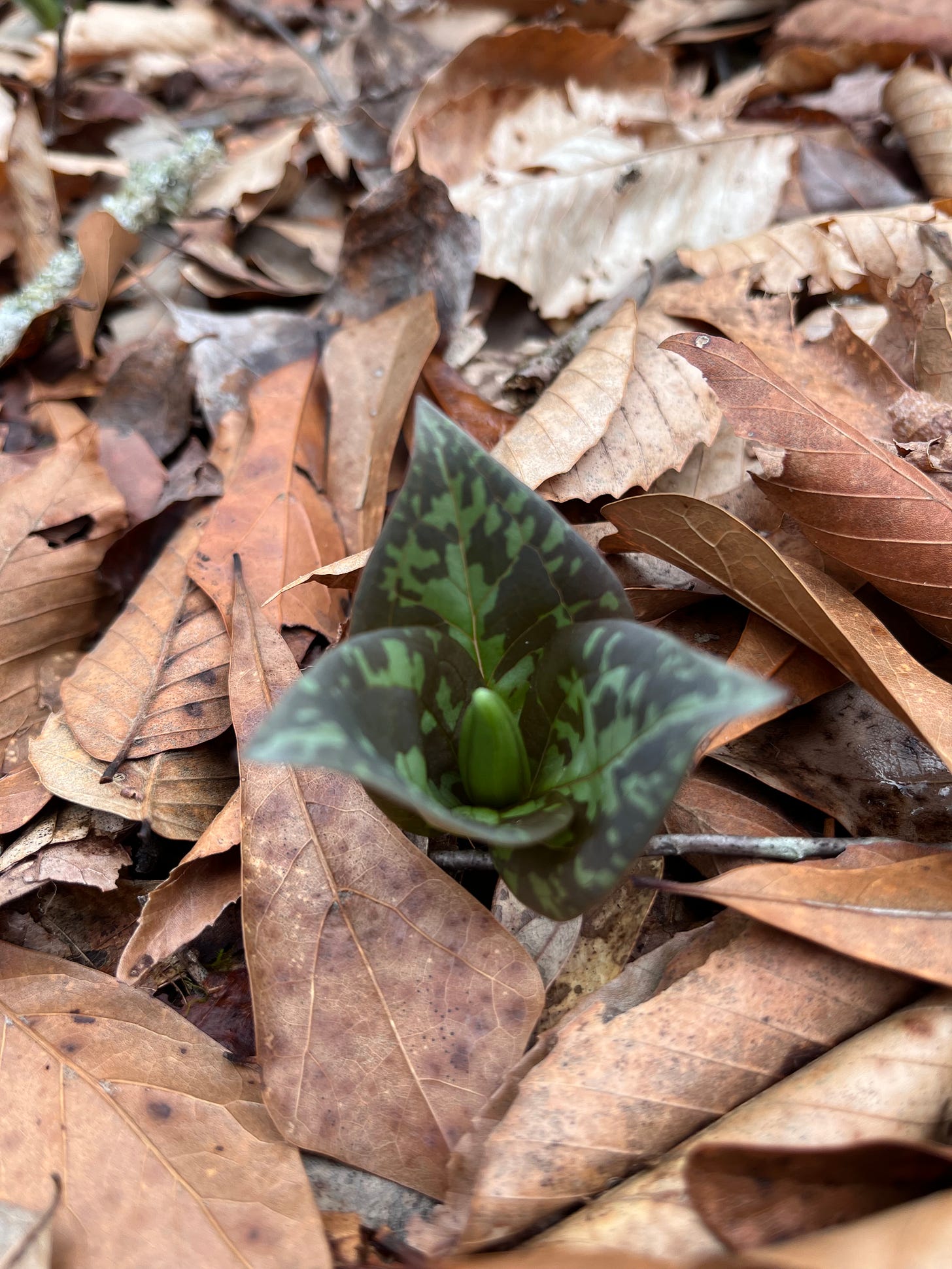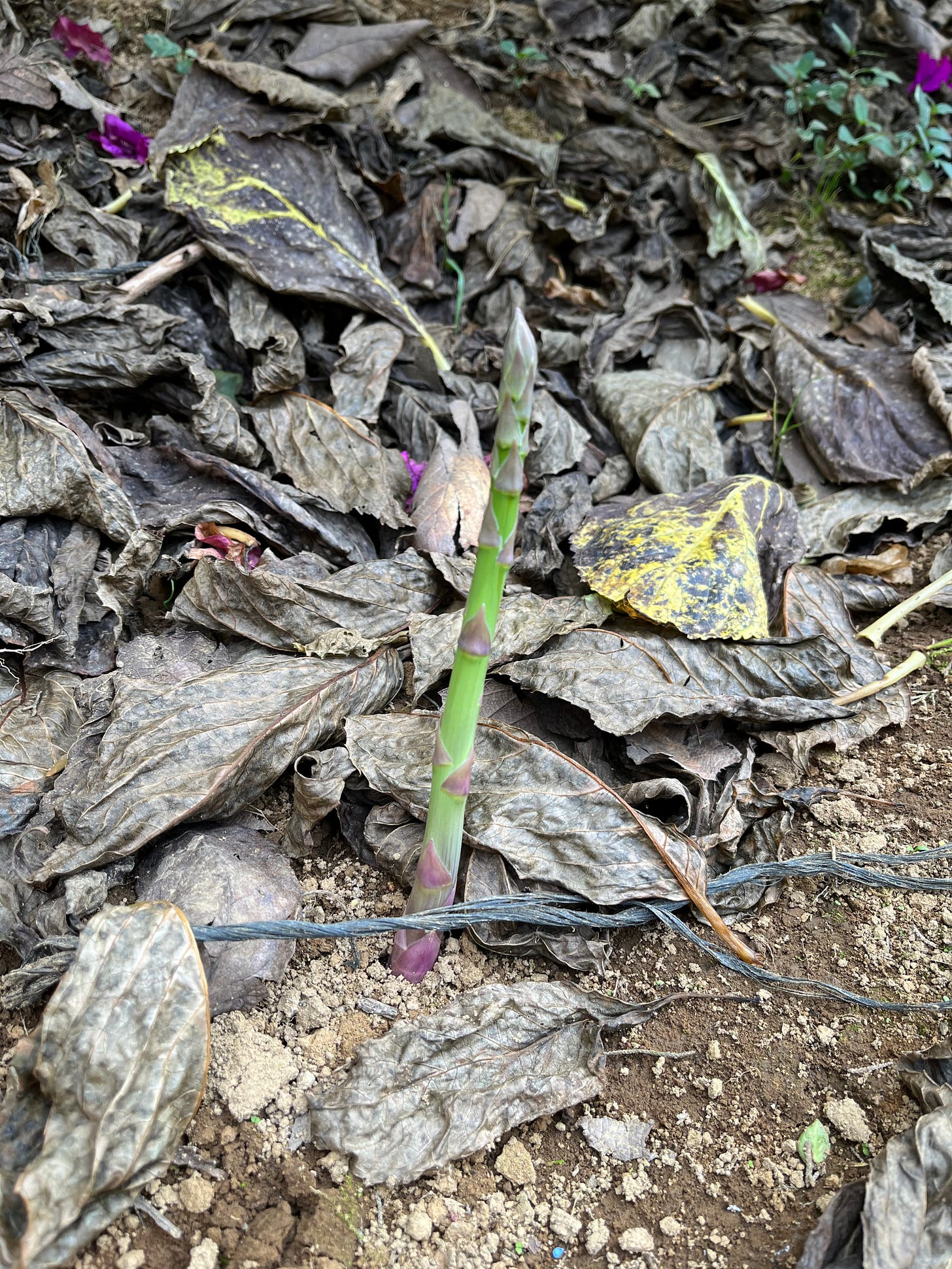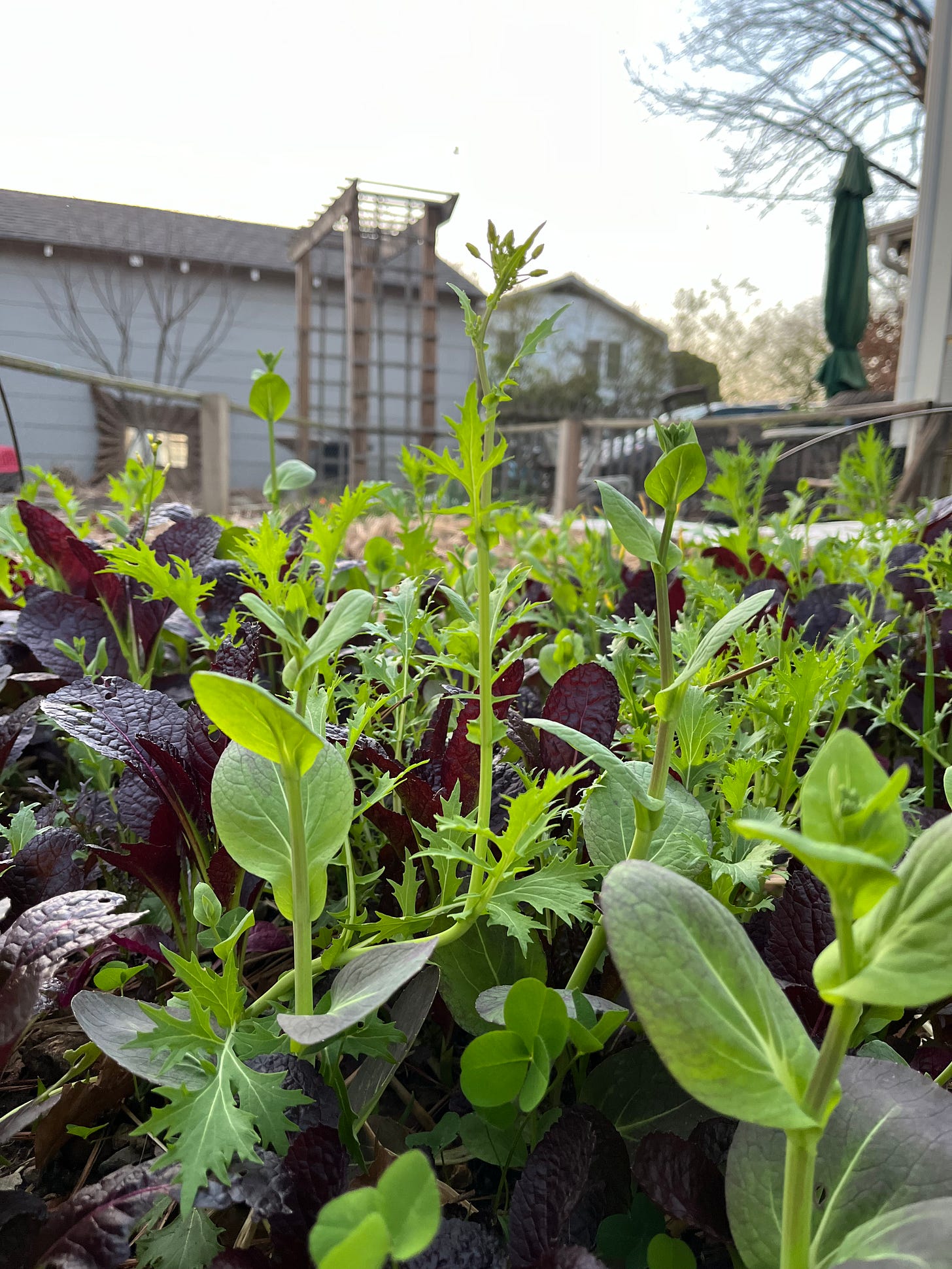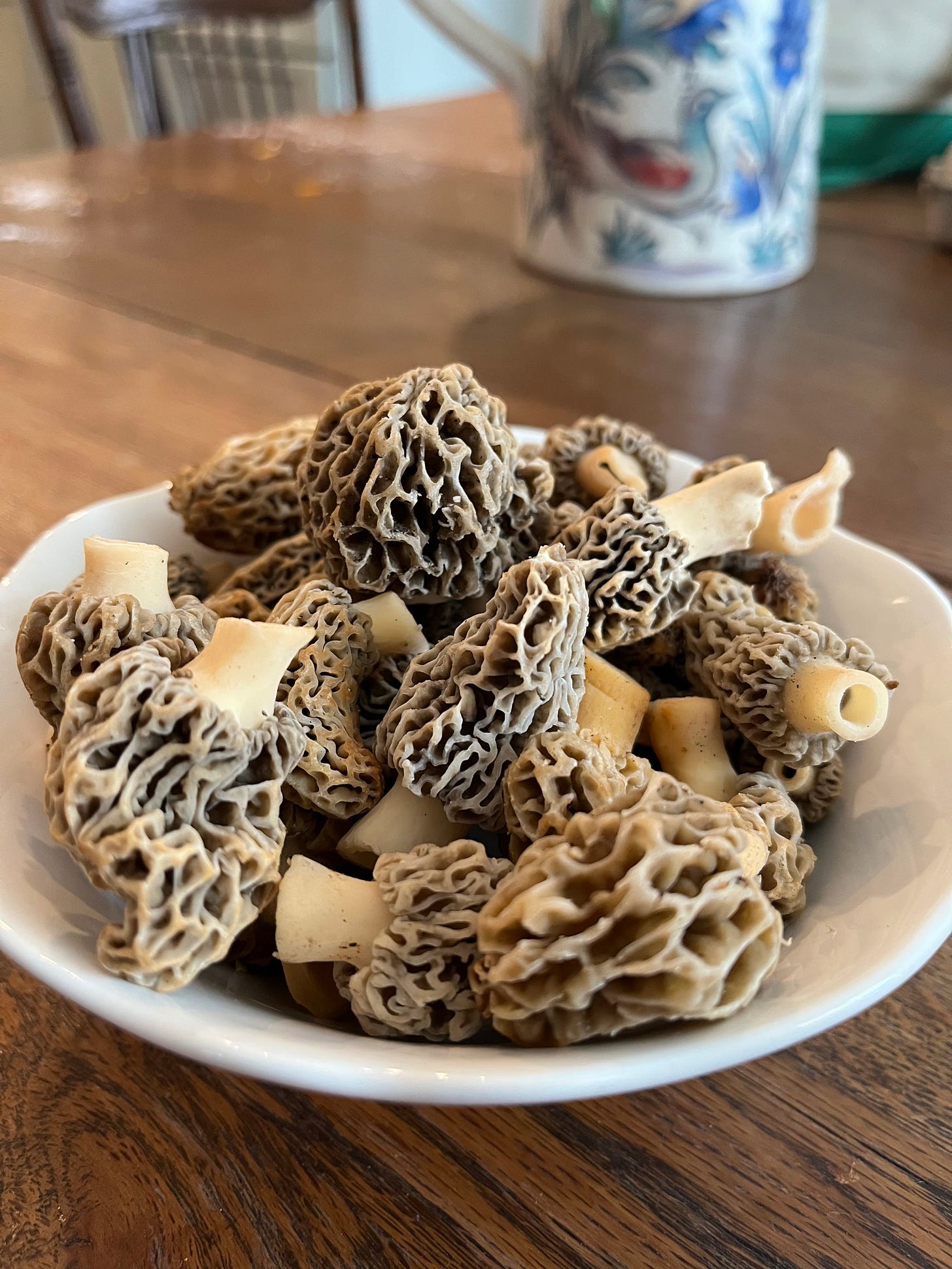March is an exciting month. Perceptible changes are taking place all around us in our little nook of the world . Trees are starting to bud out, chorus frogs are loudly proclaiming their presence, and ephemeral wild flowers are starting to bloom.
Listen to these chorus frogs! It was incredibly loud, and yet very soothing.
Last year was the first time I really looked forward to the ephemeral wildflowers. The Virginia Bluebells have always been on my radar, but now my awareness has grown and so has my interest. The anticipation of the season adds to its allure and excitement. As of writing this, I have already spotted liverwort, rue anemone, and spring beauty, all blooming within a few feet from one another. Next, I spotted trillium! Soon trout lilies will blossom, followed by the bluebells and dutchman’s breeches.

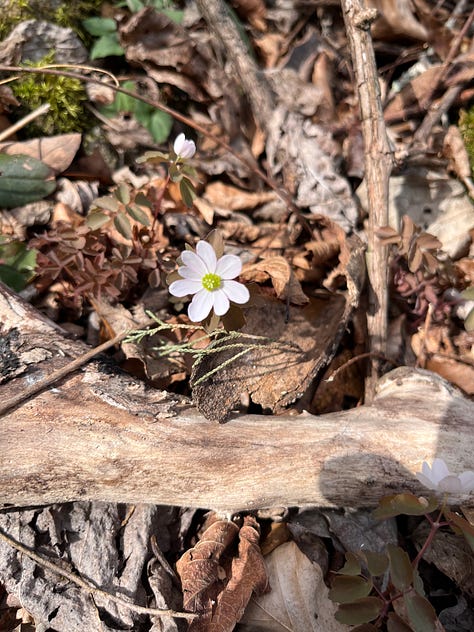

March is also the time when gardeners get antsy and plant tomatoes way too early. There will come a day when temperatures hit the 80’s for a few days and the box stores will sell dozens and dozens of tomatoes and peppers that are destined to die a slow and painful death when the last frost of the season sneaks back in to wreck the over zealous gardener’s tomato dreams. Don’t be that person. Know your frost date (find it here) and wait to plant those tomatoes.
But don’t wait to start tomato seeds. If you haven’t already, definitely get on that! Same for peppers, and eggplant. Truthfully, we haven’t started ours yet. So many things are in motion since we moved back to the farm in August and everything feels late and many things are taking a back seat to larger projects. It will be ok. One day at a time.

In the Garden
🍓 March is the time to put in strawberry and asparagus beds.
📒 Here is Gene Logsdon’s instructions on planting asparagus from his 1973 book Homesteading: How to Find New Independence on the Land.
“The ‘proper’ way to grow asparagus is to buy second year roots (one year old roots). Place them in a hole or trench about six inches below the surface of the soil, being careful to spread the roots out, fan-shaped, in the bottom of the trench or hole. Do the job as soon as the ground is workable in spring. Cover with no more than two inches of soil. As the stalks start to grow (they will be quite tiny at first), gradually fill in dirt around them until the ground is level. Do not harvest any stalks the first year, nor the second. By the third year, you should be able to cut stalks until hot weather - or for about a month from when the first stalks appeared.
I have to be a little obstinate and raise asparagus my own way. I start my plants from seed in peat pots full of vermiculite. After the seed grows to a plant of four or five inches, I set the plant, peat and all in a six inch hole, then treat it just like plants grown from roots. By the third year after planting, I get almost as many spears to eat from my plants as from roots planted at the same time.”
There are a lot of reasons to love asparagus. Once established, it will produce for decades. It requires minimal labor and thrives on additions of compost each year. Fresh cut asparagus has a unique flavor that can only be enjoyed when its eaten shortly after harvest.
👉 Direct Seed straight into the garden - Carrots, swiss chard, collards, kale, kohlrabi, leaf lettuce, parsley, beets, radishes, green onions
👉 Transplant - After hardening off, plant into your garden your frost hardy, cool season crops that you seeded in January. Plant the smaller, less developed seedlings to avoid bolting.
[Bolting is a term that means ‘going to seed’. I reckon its called ‘bolting’ because whenever a vegetable decides its time to put energy into producing seed, the plant sends a stem straight up and flowers. It literally bolts up. When this happens, the flavor and texture of the plant changes and generally becomes less palatable.]
Some Timely Tips
✔️ In late winter/early spring, begin preparing for the growing season by getting hoses and gardening supplies ready for use. Ensure your hoses are flowing properly and do not have holes in them. Also check for pests as they make great over wintering homes for all kinds of critters.
✔️ If you didn't clean, oil, and tune up your lawn equipment before putting them away for winter, early spring is the time to get that done before everything really starts growing.
Seasonal Living
We use to live near a trail called “The Wildflower Trail.” March is one of the best months for walking that trail because it’s the month for woodland, wild flower ephemerals. The trees have yet to put on leaves and for a brief period, sunlight hits the forest floor and sparks a burst of blooms.
Consider going for a hike this March and when you do, see how many different wildflowers you spot!

Spring Equinox
This year, the sun will shine directly onto the equator as it heads northward in the sky on March 20th. This is known as the spring equinox or the vernal equinox.
Calendar of Firsts
A calendar of firsts serves as a meaningful tool to celebrate and connect with the ever-changing rhythms of nature throughout the year. Its purpose is to document and acknowledge the first occurrences of various events and natural phenomena that mark the transition of seasons. By recording the first blooming flowers, migrating birds, or changing foliage, individuals deepen their awareness of the subtle shifts that unfold in the natural world. This heightened observation cultivates a sense of awe and appreciation for the beauty and diversity of our environment. Moreover, a calendar of firsts invites us to engage in a deeper relationship with the natural world, fostering a sense of connection, mindfulness, and gratitude. It allows us to truly immerse ourselves in the present moment and develop a greater understanding of the intricate cycles that shape our lives and the world around us.
March firsts to be looking for:
Remember these are general examples for zone 7 in the southeast US. Specific occurences will depend on your regional climate and conditions. Keeping a personal calendar or journal will allow you to capture the unique experiences and observations of each month in your region.
First sighting of migratory birds returning from winter migration
Emergence of daffodils (We saw our first daffodil bloom in Feb.)
First blossoms on cherry and peach trees
First signs of new growth on deciduous trees
Arrival of chorus frogs or toads in ponds or wetlands
First really warm and sunny day for an outdoor picnic
First outdoor planting of cool-season crops in the garden
First bluebird sighting
First morel find





